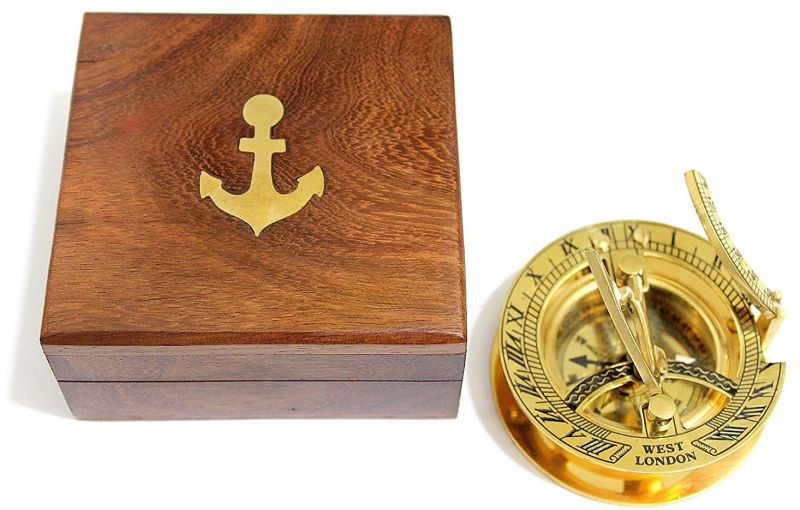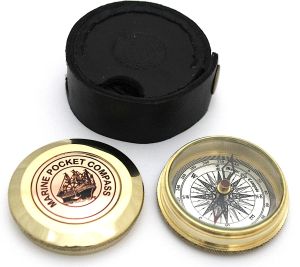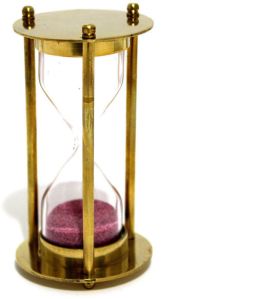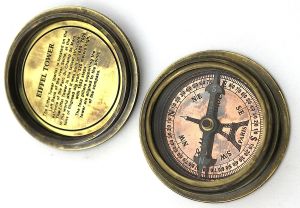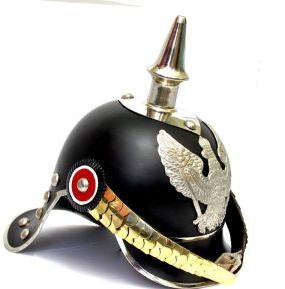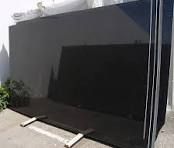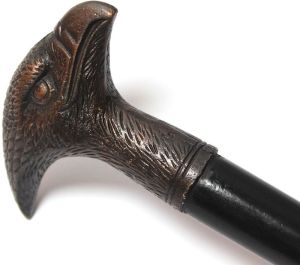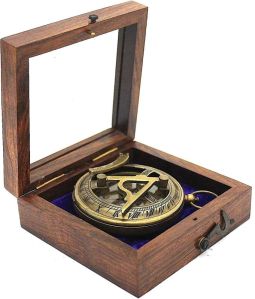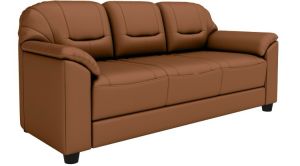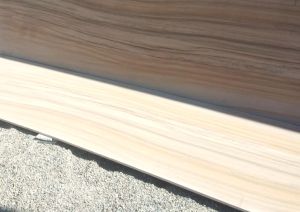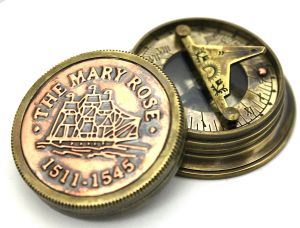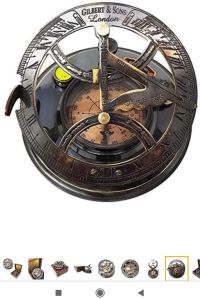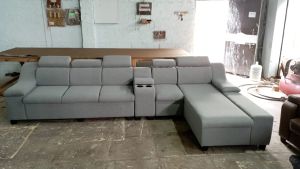- Baopet, Karimnagar, Telangana
- View Mobile Number
| Business Type | Exporter, Supplier, Retailer, Trader, Distributor |
| Brand Name | QG Enterprise,West London Sundial |
| Material | Brass,Solid Brass |
| Finishing | Polished |
| Click to view more | |
Preferred Buyer From
| Location | Worldwide |
Product Details
Box Material: The compass is securely packaged in a sturdy, eco-friendly cardboard box.
Design: The box features a vintage design with decorative elements reflecting the classic nature of the brass compass inside.
Dimensions: Compact size tailored to fit the 2-inch compass snugly, reducing movement during transit.
Interior Packaging:
Protective Padding: The compass is nestled in a layer of protective padding, such as foam or velvet, to prevent scratches and damage.
Compartments: The box may include a small compartment or pouch to hold the compass securely in place.
Insert: An informational insert or booklet is included, detailing the compass\'s features, usage instructions, and care guidelines.
Presentation:
Appearance: The packaging is designed to be aesthetically pleasing, making it suitable for gifting purposes.
Branding:The box may feature subtle branding, such as a logo or brand name, adding a touch of elegance without overpowering the vintage design.
Extras:
Accessory:A small key chain or lanyard may be included, allowing for easy attachment to bags or belts.
Warranty:Information about the product warranty and customer service contact details may be provided.
The packaging ensures that the brass compass arrives in perfect condition while offering an appealing presentation for gifting or display.
The West London Sundial Compass is a unique navigational and time-keeping instrument that combines the features of a traditional compass with those of a sundial. This hybrid device allows users to determine direction and also to estimate the time of day using the position of the sun. Here are some details about this type of instrument:
1. Design and Structure:
- Sundial Component: Typically includes a gnomon, which is the part of a sundial that casts the shadow. The gnomon is usually adjustable or foldable to make the instrument portable.
- Compass Component: Contains a magnetic compass needle that aligns itself with the Earth's magnetic field, pointing towards the magnetic north.
- Dial Plate: The base of the sundial, often marked with hour lines and compass directions.
2. Materials:
- Often made from durable materials like brass, bronze, or high-quality steel to withstand outdoor conditions.
- Some modern versions might use aluminum or other lightweight materials for ease of carrying.
3. Functionality:
- Time-Telling: When the sundial compass is placed on a flat surface and oriented so that the compass needle points to true north, the gnomon casts a shadow on the dial plate. The position of the shadow on the hour lines indicates the solar time.
- Navigation: The compass component helps users determine the cardinal directions (North, South, East, and West), which is useful for navigation.
4. Usage:
- Setting Up: Open the device and set the gnomon upright. Ensure the compass needle is stable and pointing to magnetic north.
- Adjusting for Declination: If necessary, adjust for magnetic declination, the difference between magnetic north and true north, based on your geographical location.
- Reading Time: Observe where the shadow falls on the hour lines to estimate the current solar time.
5. Applications:
- Used by hikers, campers, and outdoor enthusiasts for both navigation and time-telling in wilderness settings.
- Historically used by explorers and travelers before the widespread availability of modern clocks and GPS devices.
- Educational tool to teach about early navigation techniques and the movement of the sun across the sky.
6. Historical Significance:
- Sundials have been used since ancient times for timekeeping, while magnetic compasses have been essential for navigation since their invention in China during the Han Dynasty.
- The combination of these two instruments into a single device represents a significant innovation in portable timekeeping and navigation tools.
The West London Sundial Compass is an example of how historical tools can be combined to create multifunctional instruments, blending ancient timekeeping techniques with navigational aids.
